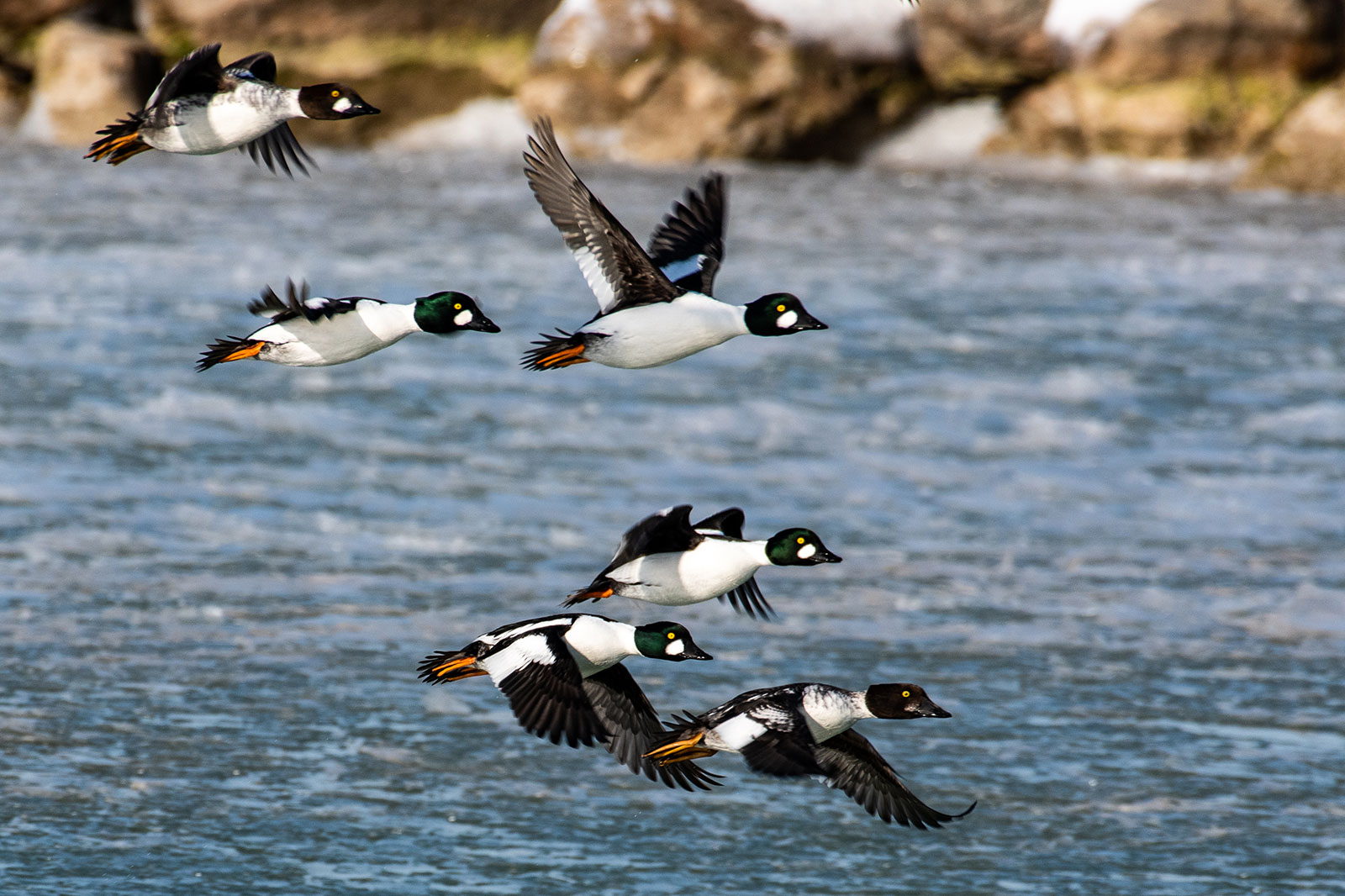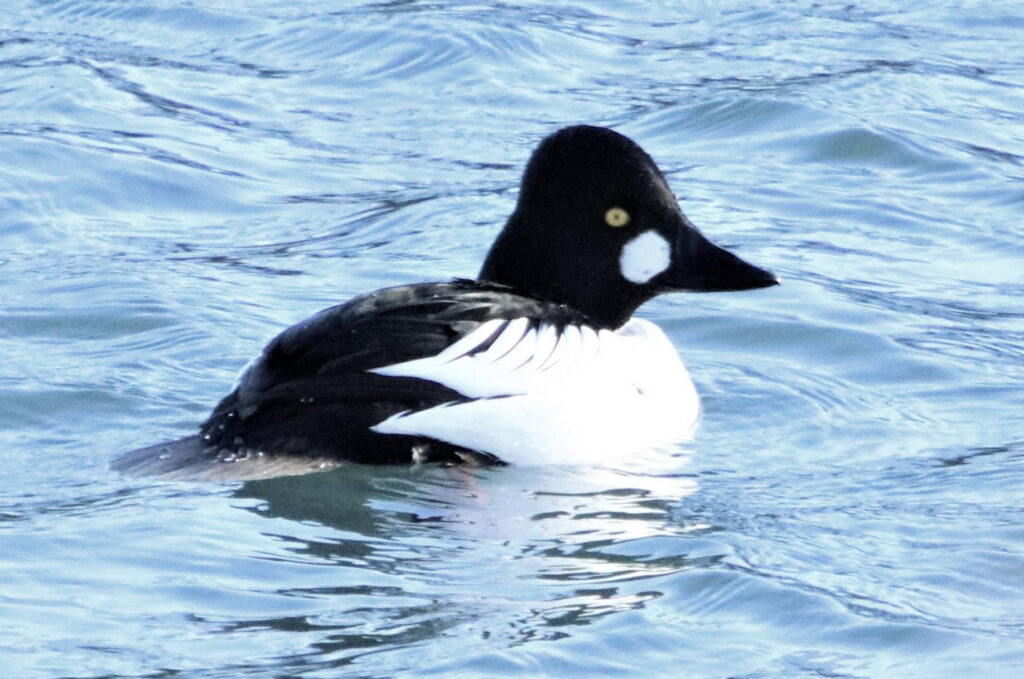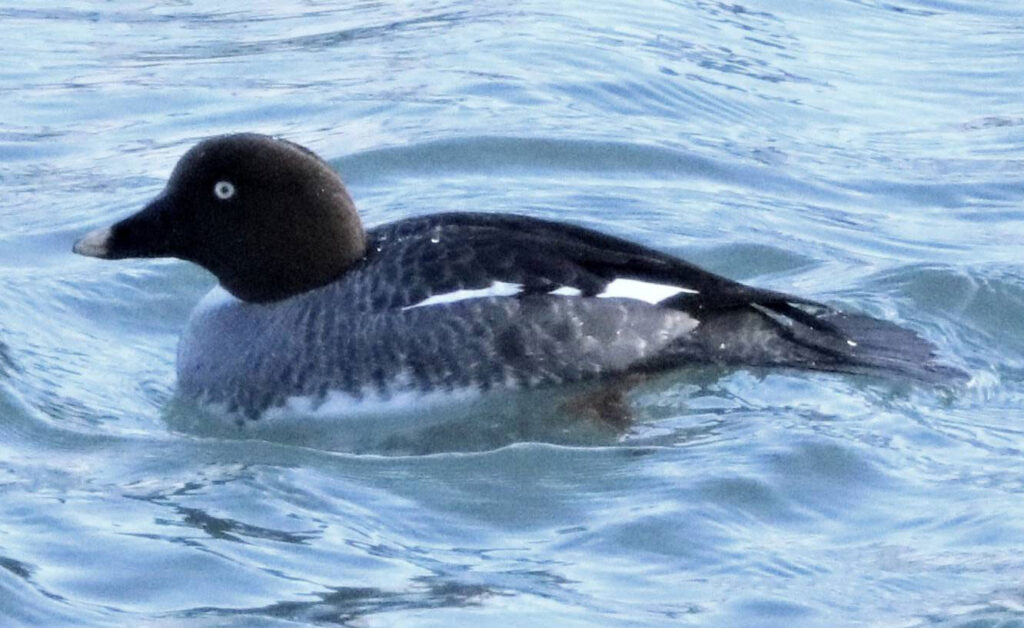In my many trips to the Kenosha Harbor this past year, I’ve noticed key signs Lake Michigan is back supporting a healthy ecosystem.
One is duck migration.
Duck species once rarely seen — particularly Mergansers and Goldeneyes — are common sightings in the Harbor this winter. Both of these species are diver ducks and need open water in order to feed.
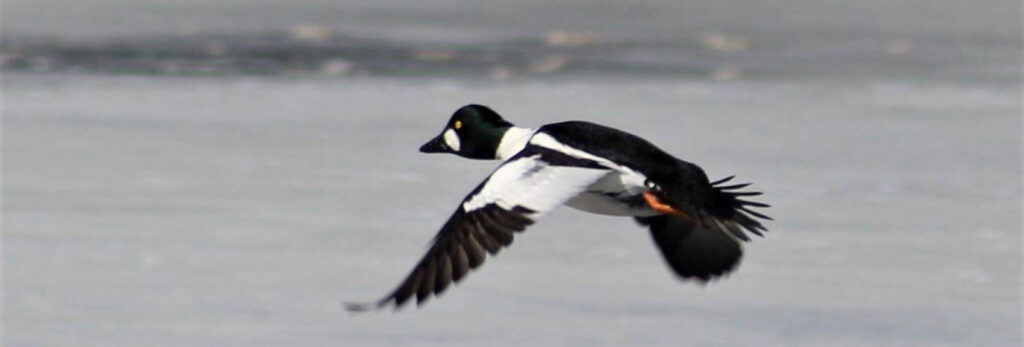
PHOTO: ANNIE KAMOSKE
I recently spotted a group of Goldeneyes that decided to winter in the Harbor. The ducks appear unaffected by the extreme cold temperatures and go about their business in whatever open water they can find.
Wondering why they’re here, I’ve come up with the hypothesis that the lake’s ecosystem has now flipped in a way that supports these new visitors.
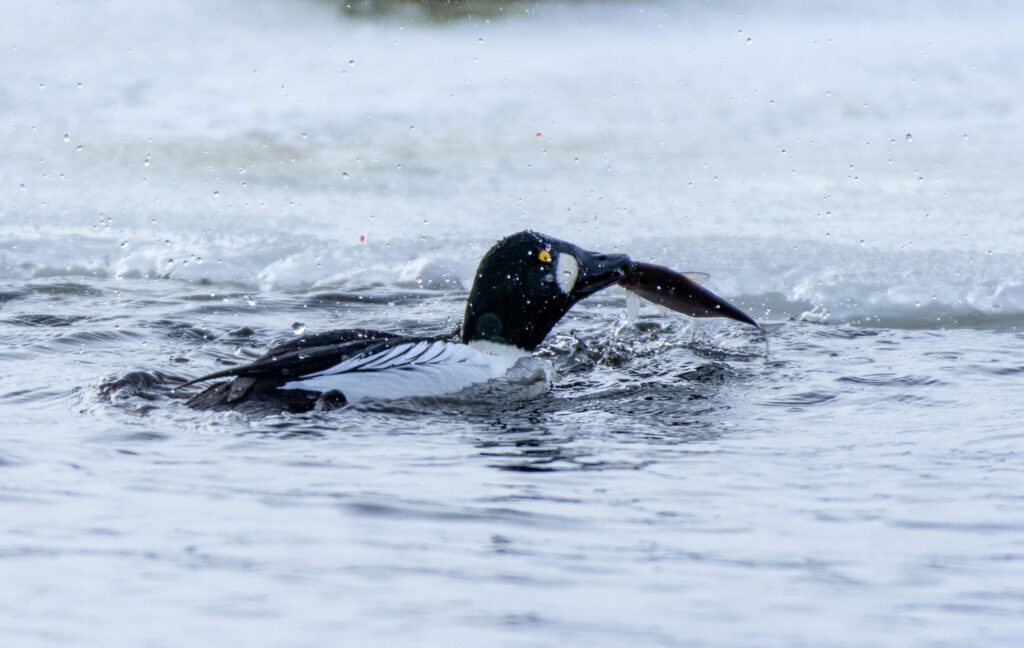
PHOTO: TERRY MORTIER
Diving ducks would not be here if their food source was scarce. Goldeneyes eat invertebrates and small fish and it appears both of these food sources are now readily available in the Harbor.
I definitely know the Goldeneyes are feeding on small fish and I’m guessing invasive zebra mussels and quagga mussels they are finding around the Harbor. The invasive mussels have made a tremendous impact on the lake and one of the primary reasons the lake is now blueish-green and not brownish-green as in years’ past.
The mussels have affected water clarity by filtering algae. Over the past 20 years, this has caused the lake’s ecosystems to change and resulted in far fewer perch than the “good ole days.”
Alewives have also all but disappeared. Mother Nature may now be working her magic by the appearance of these little ducks as a means of balancing at least some of the mussel populations. I suppose they now pose a new link in the local food chain within Kenosha Harbor.
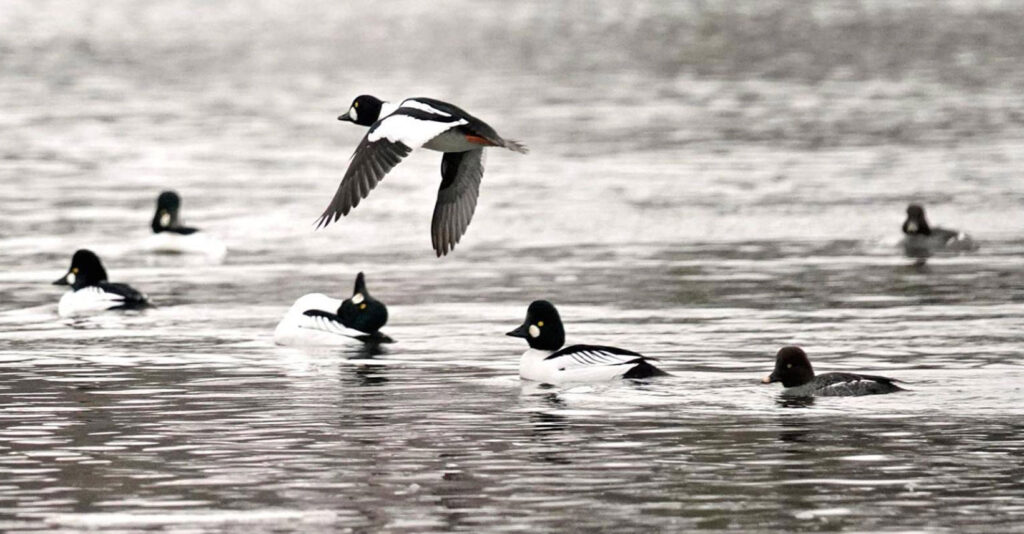
PHOTO: ED WELK
Goldeneyes are named after their radiant amber-colored eyes. The males have glistening, greenish black heads and crisp black-and-white bodies and wings. The females have a chocolate-brown head with the same brilliant amber eyes as the males. These ducks have a very distinctive shape with large heads in comparison to their body size.
If you’re interested in watching these ducks, the Harbor has many areas you can sit and watch. I particularly like the areas near Simmons Island Bridge where I frequently watch them diving around structures in the water. They really are a treat to watch as they are quite skittish and will swim quickly away while turning their head to watch you if you get too close. They dive under the surface when feeding and can stay under water for up to a minute.
PHOTOS: THOMAS CORRAO
The Goldeneyes’ home territory is actually the boreal forests of Canada and Alaska where they go to breed and nest in tree cavities alongside large rivers and lakes. In winter, they normally migrate south as far as northern Mexico and can be found on both the Atlantic and Pacific coasts as well as the Gulf Coast.
Who really knows why they decided to stick around in Wisconsin if they could be sunning themselves on some southern coast, but I for one am glad they’re here.
While Lake Michigan may never return to the lake our grandfathers knew, it does appear to be balancing as far as the ecosystem goes. The brown trout being pulled through the Harbor ice are healthy and plentiful.
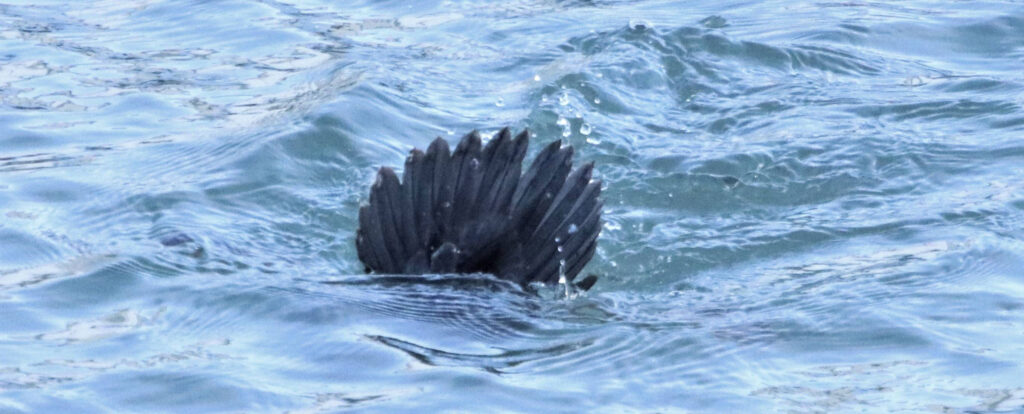
PHOTO: THOMAS CORRAO
In the past, I remember seeing trout and salmon in the Harbor with lesions on them and warnings not to eat them if they were too big because of mercury levels in their fat. In 2020, the lake was at its high-water capacity and scientists now believe that this is helping to dissipate the mercury levels in fish within the lake.
Perhaps the appearance of these diver ducks is the next chapter in the lake’s restoration and we may begin to see positive changes in the fisheries as a result.
That’s it for this week’s “Capturing Kenosha.” I hope you all enjoyed hearing about Kenosha’s Goldeneyes. If you get a chance, take a ride down to the Harbor and see them.

